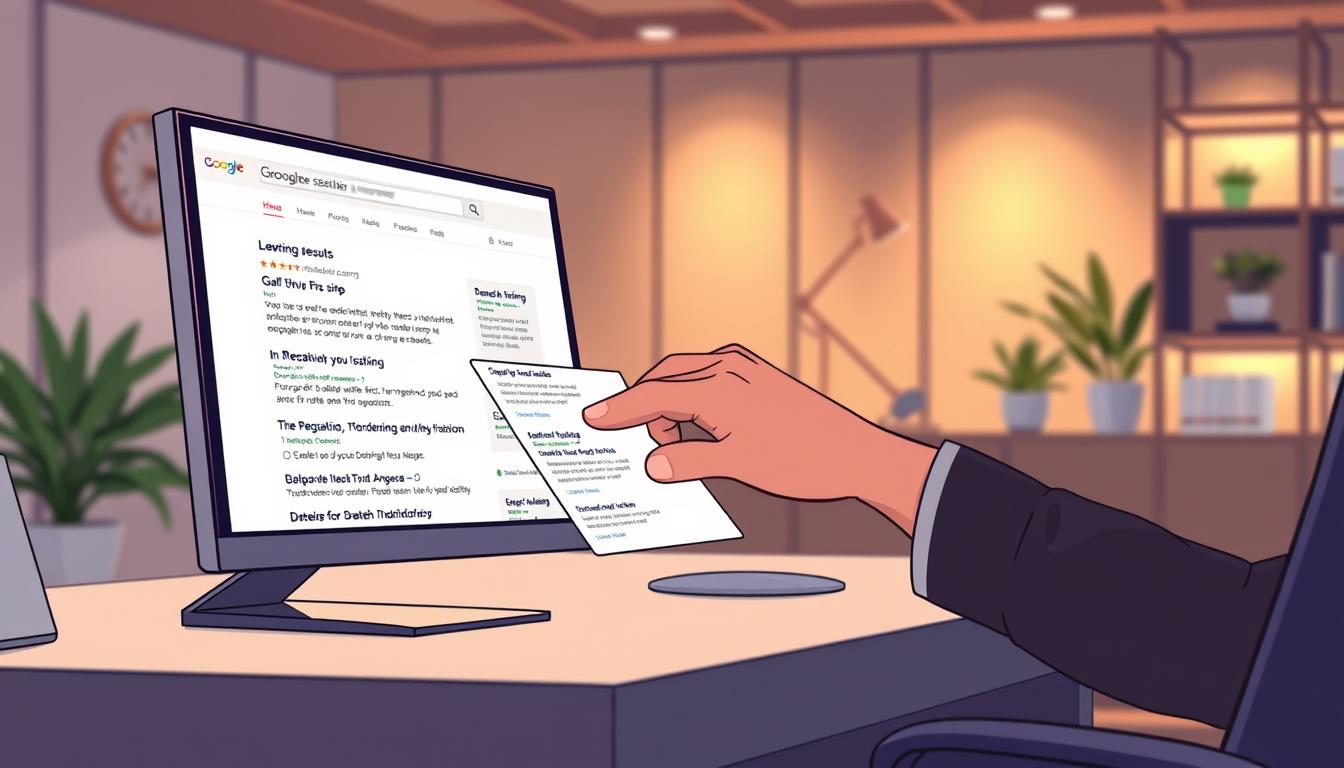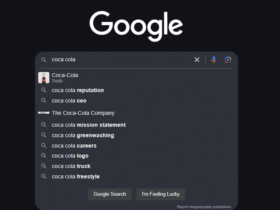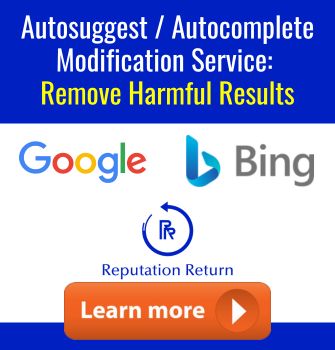In today’s digital age, a single negative news article can significantly harm your online reputation, potentially leading to lost business opportunities and damaged relationships. At ReputationReturn.com, we understand the urgency and impact of such situations, which is why we’ve created this comprehensive guide to help you navigate the process of removing negative news articles from Google.
Understanding negative news removal is crucial for both individuals and businesses. News articles, especially those from high-authority sources like The New York Times or USA Today, can persist in search results due to their strong domain authority. This persistence can lead to long-term reputational damage, making it essential to act swiftly.
Our experts, along with insights from industry leaders like BetterReputation and Reputation Defense Network, will guide you through the strategies to suppress or remove harmful content. Whether you’re an individual or a business, we’re here to help you safeguard your online reputation with proven techniques and personalized solutions.
Don’t let negative news articles dictate your online presence. Contact ReputationReturn.com today for a free and private consultation to discuss your unique situation and explore effective strategies to protect your reputation.
Key Takeaways
- High-authority news sites can cause negative articles to rank highly in search results.
- Acting quickly is crucial to minimize the impact of negative content.
- Strategies include content suppression and working with reputation management experts.
- ReputationReturn offers free consultations to address your concerns.
- Combining legal and SEO strategies can effectively manage online reputation.
Understanding the Impact of Negative News on Your Reputation
In the digital landscape, a single harmful news article can have lasting repercussions on both personal and business reputations. At ReputationReturn.com, we understand how critical it is to address these issues promptly to mitigate potential damage.
How Search Results Shape Perception
Search engine results play a pivotal role in shaping public perception. Negative news articles often appear at the top of search results, especially when they’re new, making them highly visible. Studies show that only 5% of users look beyond the first page, emphasizing the importance of managing your online presence effectively. Learn more about identifying signs of reputational risk.
The Long-Term Effects of Negative Media Coverage
Negative news can overshadow positive content, eroding trust and credibility. Over time, this can lead to lost business opportunities and strained relationships. For instance, 60% of consumers avoid businesses with negative online reviews. Employers and educational institutions also conduct online searches, which can impact job prospects and educational opportunities.
Proactive reputation management is essential to counteract these effects. Understanding the impact of negative news is the first step toward an effective strategy to protect your online reputation.
Preparing for Effective Negative News Removal
Addressing harmful content requires a strategic approach. At ReputationReturn.com, we emphasize the importance of thorough preparation to ensure successful outcomes.
Identifying and Documenting Harmful Articles
To tackle harmful content, start by identifying all instances of the damaging article. Use incognito searches with varied terms to uncover every occurrence. This step is crucial for a comprehensive strategy.
Documenting each URL and publication detail is essential. This record helps track the content’s reach and informs your removal approach. Gather evidence like screenshots and dates to support your case.
Structured documentation guides your efforts, helping prioritize which articles to address first. Preparation is key before reaching out to outlets or using removal tools. Organized records also support future legal or editorial discussions.
Proactive preparation strengthens your position, whether negotiating with publishers or pursuing legal action. Contact us for expert guidance in managing your online reputation.
Researching and Tracking News Articles
Staying ahead of unwanted news articles requires a proactive and organized approach. At ReputationReturn.com, we emphasize the importance of thorough research to identify and monitor harmful content effectively.
Conducting Incognito Searches
To avoid personalized search results, conduct searches in incognito mode. This approach provides unbiased results, giving you a clearer picture of how others see your online presence. Regular monitoring helps detect any re-emergence of harmful content.
Utilizing Multiple Search Parameters
Using varied search terms like your name, industry, or location ensures comprehensive tracking. This strategy helps uncover all instances of the article, even when syndicated across different platforms.
| Search Strategy | Parameters | Benefits |
|---|---|---|
| Incognito Mode | Name, Location, Keywords | Unbiased Results |
| Advanced Search | Site, Date, Filetype | Specific Filtering |
| Google Alerts | Keywords, Frequency | Real-time Monitoring |
Systematic tracking of syndicated content is crucial for effective removal. Thorough research supports a more efficient process, ensuring all harmful content is addressed. For more strategies, visit this guide.

Establishing Contact with News Outlets
Effective communication with news outlets is a cornerstone of managing harmful content. At ReputationReturn.com, we guide you through the process of establishing professional contact to address negative articles.
Locating Editor Contact Information
Identifying the right contact at a news outlet is the first step in your outreach efforts. Use tools like email scouting software or LinkedIn Premium to find editor contact details. These tools help you gather accurate information efficiently.
Crafting Professional Outreach Messages
Your message should be polite and factual. Include evidence supporting your request, such as documented harm caused by the article. A clear, respectful tone helps maintain a positive relationship with the outlet.
| Tool | Use | Benefit |
|---|---|---|
| Email Scouting | Find editor emails | Direct communication |
| LinkedIn Premium | Identify key contacts | Targeted outreach |
Documenting your efforts and following up can significantly improve outcomes. For personalized assistance, contact us for a free consultation to explore your options.
Requesting Google Search Result Removals
Google offers tools to help individuals and businesses manage their online presence by requesting the removal of certain search results. While these tools can be effective, understanding their limitations is crucial for a successful strategy.
Using Google’s Removal Tools
Google’s removal process typically involves a three-pronged approach: policy violations, legal grounds, or direct requests within search results. The platform may remove content that violates its policies, such as personal content or legal issues like defamation. However, success is not guaranteed, as Google carefully reviews each request.
Submitting a removal request requires clear evidence and documentation. Google’s review process can take time, and while it may reduce visibility, it’s often just one part of a broader strategy. For the best results, combine this approach with proactive content optimization to suppress unwanted results.
Effective Negative News Removal Strategies
Combining legal and editorial approaches is often the most effective way to address harmful content. At ReputationReturn.com, we recommend a balanced strategy that leverages both legal grounds and well-crafted editorial requests to achieve optimal results.

Leveraging Legal Grounds and Editorial Requests
Legal grounds, such as defamation or inaccuracies, can be powerful tools to pressure outlets to remove harmful content. A professionally drafted editorial request, on the other hand, offers a more diplomatic approach that maintains positive relationships while addressing the issue.
- Legal intervention has successfully led to content removal in several cases, emphasizing the importance of evidence-based requests.
- A well-crafted editorial request can be more effective than aggressive tactics, preserving relationships while resolving the issue.
- Even if complete removal isn’t possible, a combined approach can suppress negative content, pushing it down in search results.
- Targeted strategies can mitigate damage, even when full removal isn’t immediately achievable.
For personalized guidance on removing negative news articles, visit this resource to explore effective strategies for protecting your online reputation.
Optimizing Your Own Content to Suppress Negative Results
Enhancing your online content is a powerful strategy to overshadow harmful search results. By focusing on high-quality, positive content, you can improve your search engine rankings and protect your reputation. At ReputationReturn.com, we recommend a dual approach of updating existing pages and creating new, engaging content to achieve this goal.
Updating and Refreshing Existing Pages
Refreshing outdated content on your website can significantly boost its ranking. Start by rewriting outdated information, adding fresh insights, and optimizing with relevant keywords. For example, a company updated its blog by incorporating industry trends, which improved its search visibility and pushed negative articles down. This approach not only enhances user engagement but also signals to search engines that your site is active and authoritative.
Creating Positive, High-Ranking Content
Producing high-quality, positive content is essential for suppressing negative search results. Focus on topics that highlight your strengths and achievements. For instance, creating case studies or testimonials can showcase your expertise and build trust. SEO best practices, such as internal linking and using Exact Match Domains, can further enhance your content’s visibility, helping it outrank negative articles.
By implementing these strategies, you can effectively manage your online reputation and ensure your digital presence remains positive and professional. Take proactive steps today to update, create, and promote positive information about yourself or your business.
Legal and Ethical Considerations in Content Removal
When addressing harmful content, it’s essential to navigate both legal boundaries and ethical responsibilities. At ReputationReturn.com, we emphasize the importance of a balanced approach that respects legal frameworks while maintaining ethical standards.
Understanding Defamation and Libel Laws
Defamation involves false statements that harm someone’s reputation. Libel refers to written defamation, while slander is spoken. In the context of news articles, libel is particularly relevant. For public figures, proving “actual malice” is required, whereas private individuals need only show negligence.
When to Consult a Content Removal Attorney
Legal action is advisable when content causes significant harm and meets specific criteria. However, it’s crucial to weigh the risks, such as the Streisand effect, which can amplify attention. Consulting an attorney specializing in content removal can provide tailored guidance and strategies.
- Defamation and libel laws protect reputations but require precise evidence.
- Ethical requests maintain relationships and long-term reputation.
- Legal action can backfire, increasing content visibility.
- Expert attorneys offer targeted strategies for content removal.
Ethical practices protect your reputation long-term, even during aggressive removal efforts. Weigh risks like the Streisand effect before legal actions. For personalized guidance, contact us for a free consultation.
Conclusion
In today’s fast-paced digital world, managing your online reputation is more critical than ever. A single harmful article can overshadow years of positive content, affecting both personal and professional opportunities. At ReputationReturn.com, we’ve outlined a comprehensive approach to address this challenge, emphasizing the importance of prompt action and expert guidance.
Your journey begins with understanding the impact of harmful content and preparing a strategic plan. This involves researching and documenting every instance of the article, establishing contact with news outlets, and submitting removal requests to Google. Legal considerations and content optimization are also vital components of this process. By combining these strategies, you can effectively suppress or remove damaging content and restore your online image.
A multi-faceted approach is essential to mitigate the impact of negative news. This includes legal interventions, editorial requests, and optimizing your own content to outperform harmful results. We encourage you to seek professional help from experts who can tailor strategies to your unique situation.
ReputationReturn.com offers a free and confidential consultation to guide you through this process. By taking proactive steps to manage your online reputation, you can safeguard your digital presence and ensure a brighter future. Don’t let unwanted content define you—act now to protect what matters most.
For more insights on how your online reputation can impact your career, visit this resource to explore effective strategies for maintaining a positive digital presence.
FAQ
How do I start the process of removing negative news articles?
Begin by identifying the specific articles causing harm. Document the URLs and assess the content’s impact. Contact the publication or use Google’s removal tools to request deletion. Consulting a professional service can streamline the process.
What methods are most effective for removing negative news articles?
The most effective methods include direct outreach to the publication, submitting removal requests through Google, and leveraging legal options if defamation is involved. A strategic approach often yields the best results.
What documentation do I need to remove a negative news article?
Gather evidence of the article’s URL, publication date, and any harmful content. If claiming defamation, provide proof of false statements. Legal documents may also be necessary in some cases.
How long does it take to remove a negative news article?
The timeline varies. Direct removal from a site can take weeks, while Google removal may take longer. Persistent effort and professional guidance can expedite the process.
What is the success rate of removing negative news articles?
Success depends on the approach and the nature of the content. Working with experts improves chances, especially when legal or editorial policies support your case.
How do I handle multiple negative news articles?
Address each article individually, prioritizing the most harmful ones. A comprehensive strategy, possibly involving SEO and content creation, can help suppress remaining articles.
Can I remove negative news articles on my own?
Yes, but it can be challenging. DIY methods include contacting the publisher or using Google’s tools. However, professional assistance often achieves better and faster results.
How does SEO help in suppressing negative news articles?
By optimizing your positive content, you can improve its search ranking, pushing negative articles lower. This strategy requires consistent effort and SEO expertise.
What if the negative news article is about my business?
Act quickly to mitigate damage. Contact the publisher, request removal, and consider SEO strategies to promote positive content about your business.
How can I prevent negative news from appearing online?
Monitor your online presence regularly and address issues promptly. Engage in reputation management and build a strong positive online presence to reduce risks.
Can Reputation Return help with removing negative news articles?
Absolutely. We offer expert services, including strategic removal and reputation management. Contact us for a free consultation to discuss your needs.















